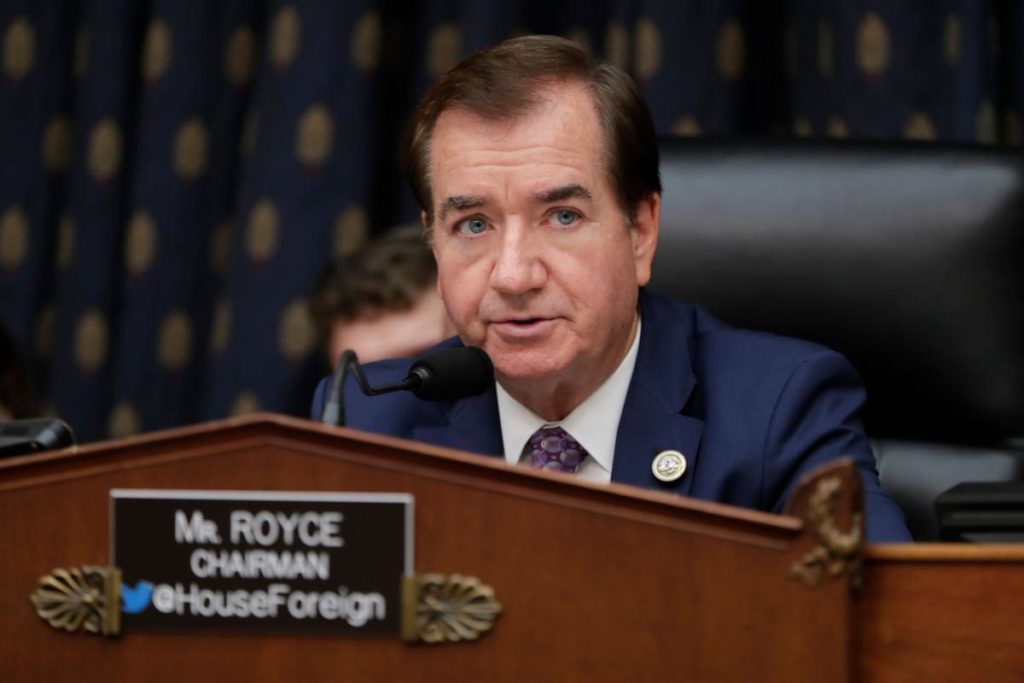Both Democrats and Republicans think the stalemate between President Donald Trump and Congress over immigration can help them in November’s congressional elections. Each could be right.
In House races across the country, both parties are using the fight over immigration — fanned by tweets from President Donald Trump about a crisis on the Mexican border that others say doesn’t exist — to fire up base voters in midterm elections. Democrats think it can help them reach minorities, young people and suburban moderates repelled by Trump’s strident anti-immigrant stances, while Republicans have noted his success in using promises to crack down on immigration to energize disaffected conservatives.
As a result, Democrats are using the issue to emphasize inclusivity and are targeting border regions, suburbs and areas with immigrant populations. Republicans, whose districts tend to be less diverse, plan to make immigration a law-and-order issue that appeals to conservatives all around the U.S.
The debate is likely to roil races in California, Texas, Florida, Arizona, perhaps New Mexico and Virginia’s Washington, D.C., suburbs. One diverse Southern California House district centered on the sprawl of Orange County has already become a testing ground for each party’s immigration strategy.
The retirement of 13-term Republican Rep. Ed Royce makes the seat a prime target for Democrats trying to pick up 23 seats in November’s elections, enough to grab House control. Seventeen GOP, Democratic and independent candidates are vying in a multiparty June 5 primary, a group that includes a Republican who has worked to scuttle pro-immigrant sanctuary city laws and a Democrat who fled Vietnam as a child.
Mai Khanh Tran’s campaign website praises “the open arms of a country” that offered “my shot at the American Dream.”
Trump this week amplified his rhetoric with tweets about “ridiculous” laws making it hard to send arrivals from Mexico “back where they came from.” On Wednesday, he signed a proclamation directing National Guard troops to secure the U.S.-Mexico border.
It’s the sort of language Democrats hope will send voters their way. Although the economy and health care register higher as voter concerns, Democrats see advantages from touting Congress’ attempt to shield young “Dreamer” immigrants from deportation. That effort collapsed in February after Trump rejected $25 billion to build his treasured border wall with Mexico in exchange for offering possible citizenship for Dreamers who were brought illegally to the U.S. as children and who have been temporarily protected by the Deferred Action for Childhood Arrivals program.
Democrats say the gridlock lets them convey a message of tolerance that can woo voters, contributors and volunteers — including liberals, minorities and moderates alienated by Trump’s words.
“Immigration is one of those cultural touchstone issues” that shows Democrats are ready to “stand up to Trump,” said Mike Lux, a liberal Democratic consultant.
Democrats say GOP incumbents vulnerable to attacks over immigration include Reps. Carlos Curbelo of South Florida, David Valadao of California’s Central Valley and Will Hurd of West Texas. Their districts are around 70 percent Hispanic.
While the U.S. population is around 18 percent Hispanic, 62 congressional districts had at least double that mark in 2016, the most recent breakdown available, according to the nonpartisan Pew Research Center. Underscoring how Hispanics tend to vote Democratic, just 13 of those districts are represented by Republicans, three of whom are retiring: Florida’s Ileana Ros-Lehtinen, New Mexico’s Steve Pearce and Texas’ Blake Farenthold.
Republicans envision campaigns raising the specter of sanctuary cities, where local authorities limit cooperation with federal immigration officials, and casting such policies as enabling immigrants in the U.S. illegally to commit crimes and grab jobs. That could help in places like Arizona and northern and central Florida, they say.
Many voters view Democrats “as the party of protecting illegals over citizens,” said Corry Bliss, executive director of the Congressional Leadership Fund, a political committee aligned with House Speaker Paul Ryan, R-Wis. “This issue works across the country.”
Bliss’ group ran TV ads attacking Democrat Conor Lamb on immigration in the waning weeks of last month’s special election in an open, overwhelmingly white House district in western Pennsylvania that heavily backed Trump in 2016.
The spots said Lamb favors “amnesty to millions of immigrants” and as an Obama administration official encouraged sanctuary cities, “which put illegal immigrants who commit crimes back on the street.” Lamb won narrowly, which Bliss attributed to a weak GOP candidate.
Republicans acknowledge that Democrats’ pro-immigration stance could attract moderate suburban voters. But the GOP could also use it to energize conservatives concerned about “the proliferation of non-English speaking people in this culture, a sense that we’re losing what America used to be,” said GOP strategist Whit Ayers.
In California, conservative Shawn Nelson is among several GOP contenders running in the Orange County contest. As a member of the county board of supervisors, Nelson helped push that body to join a federal lawsuit challenging the constitutionality of California’s sanctuary law.
“Even if you’re not seeing illegals crossing the border into your state, they’re potentially stealing your jobs, they’re potentially making you less safe,” John Thomas, Nelson’s chief strategist, said of the issue’s appeal.
One of Nelson’s Democratic opponents is Tran, a pediatrician who was evacuated to the U.S. from Vietnam in 1975.
Tran policy adviser Jack Hipkins says her message that America is “supposed to be open and inclusive and diverse” could attract Republicans displeased with the party’s harsh tone on the issue. The district is roughly evenly divided among whites, Hispanics and Asians.
The top two finishers in the crowded primary will meet in the Nov. 6 election.
(AP)











